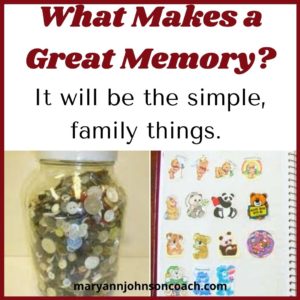 What Makes a Great Memory
What Makes a Great Memory
My adult children stay very connected via a video chat app. They talk about all kinds of things, health, work, kids, weather, holidays, etc. But, just this week, they were discussing a topic that blew me away – a jar of buttons and books of stickers. This conversation blew me away because I had no knowledge that these two items from our home had such a significant impact on all of them, from the oldest to the youngest.
When I was a young mom, stickers became a thing. You could buy stickers in the store that depicted animals, cartoon characters, flowers, etc. Before that, it was primarily stickers to use on charts in school, for chores, and garage sales.
I was fascinated with the stickers and created a couple of sticker books over the next few years. My kids would look at them for hours. However, when I moved, all the kids had gone from home except Kate, so I let them go. Some years later, Seth asked me if he could have them because he had enjoyed them so much. But alas, they were gone. I didn’t know until this sibling conversation that Seth has been collecting stickers ever since, and some are well over 20 years old.
What began the conversation was Kate, my youngest, telling me that my granddaughter, Tessa, is into stickers. Kate was hoping that I still had the books and that Tessa could have them. Marie, my middle daughter, reminded me that she had also asked for the books some years ago.
WHAT! Who would have thought that something as simple as sticker books created by me and shared by my children would have touched the hearts of all my kids enough that three of them asked if they could have them?
Then someone mentioned the gallon of buttons that we had. They all said that they loved dumping them out on the carpet and sorting the buttons. I can recall Kate and Barry pouring over the pile as they worked together. Who has a gallon of buttons anyway? Well, I did because my grandmother had one, and I loved sorting the buttons. But, unfortunately, that went during our move to Utah too.
A couple of years ago, Marie told me that Matilda loved buttons and hoped I still had that gallon jar of them. I didn’t, so I created her a jar, but a gallon of buttons is hard to find, so it was a quart. Then, her older brother, Parker, fell in love with buttons, and I made him a quart.
WHAT MAKES A GREAT MEMORY?
The world is filled with things we can buy for our kids—toys, technology, clothes, and gadgets. There are many places that we can take them—theme parks, water parks, grand vacations. We live in a world influenced by media, which says that good parents give their kids ___________.
There isn’t anything wrong with taking our children on cool trips or buying them a special toy or piece of clothing, but in the final analysis, no matter what we think, it won’t be any of those things that our children will remember with the most fondness. Instead, it will be the simple, family things.
When I was writing my book, Becoming a Present Parent: Connecting with your children in five minutes or less, I did some unscientific research on this very thing. I asked my adult children and their spouses what their fondest memories were from childhood. Here are a few shortened responses:
Jenny—“Playing with the big jar of buttons!”
Marie—“I remember loving to look at your sticker books.
Barry—“I loved sitting in the dark with the Christmas lights on in the living room.”
Seth—“I loved New Year’s Eve and the cheese and meat tray that we ate while sitting on the floor watching a movie.
Jodie—“My most cherished memories are of the Thanksgiving and Christmas season. I loved all the little traditions we had, from the way we decorated to making gingerbread houses to what we ate.”
Kate—“I remember when you stood up, not saying a word when I fell during a cheer contest. I knew you were silently saying, ‘Get up. You can do it.’”
Andrew—“I remember working with Dad in the crawl space. I don’t think either of us actually liked going down there, but we did like working together.”
I also put the question of fond memories to my daughter-in-law, siblings, cousins, nieces, and nephews. Here are a few of their responses:
Cindy (a sister)—“I remember mom reading us a chapter each night from Old Yeller. I loved the inflections in her voice, that undivided time with her, and the comfort of our warm bed.”
Deidra (a niece)—“My mom used to sell Avon, and she would keep all the big boxes her orders came in. We used the boxes to make houses to play in. It was so fun!”
Nanette (a sister)—“Mom helped me sew a dress for 4H. It was so cool and had pom poms on the hem. I was constantly breaking the sewing machine, and she would always get it working again. I won 1st place and went to state. To this day, I sew because she taught me.”
Are you getting the picture? It’s interesting to note that most of these happy and pleasant memories are of events that happened in the course of daily living. Not one respondent mentioned a fancy toy, a fancy vacation to a memorable place, name-brand clothes, a cool car the family had, the size of their home, or where their home was. No one mentioned the great lessons or classes they took. No one said Little League or other teams they played on. Not one.
Memories Come from simple Things at Home
It isn’t just little kids who love being at home whose memories and happiness hinge on simple everyday things. In a study of thirteen to twenty-four-year-olds conducted by the Associated Press and MTV, more than 100 questions were asked of 1,280 young people. The questions were all centered on determining what made these youth happy. Can you guess the number one answer? Spending time with family! Yup, that’s right, spending time with family. These kids and young adults were ages thirteen to twenty-four ((Associated Press, “Youth Happiness Study,” 2).
My favorite response to my question about memories that mattered came from my sweet daughter-in-law, Kendra. She said, “Something I’ll always cherish from my childhood was the time my parents spent with me outdoors, going to the beach, hiking, fishing, swimming, and letting me be a kid. It was something we often did because it didn’t cost much, but to me, it was the greatest thing ever. In fact, one time, my dad took me to Disneyland, and I asked him if we could leave and go to the beach. I look back on that now and think that must have both surprised him and probably made him wish he had saved all that money.”
A Gallon of Buttons and Sticker Books. Amazingly enough, these things said ‘family’ to my children. They said, “You are part of something bigger than yourself, and you belong here.”
Tips for Lasting Memories
If you want your kids to have wonderful and lasting memories that they will talk about decades from now:
-
- Stay home more
- Spend less money
- Be on screens less
- Keep life simpler
All these items are a challenge in today’s world but will be worth the effort in the long run and will bless your children and their children.



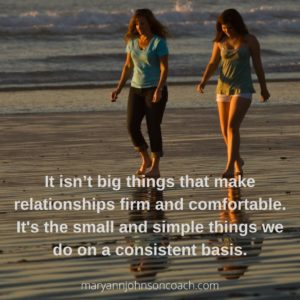 Experiments to Improve Family Relationships
Experiments to Improve Family Relationships
 “When art teacher Kandy Dea recently assigned fourth graders in her Walnut, Iowa, classroom to create a board game to play with a friend, she was shocked by one little boy’s response: He froze. “While his classmates let their imaginations run wild making up colorful characters and fantasy worlds, the little boy repeatedly said, “I can’t think of anything,” Ms. Dea says. Although she reassured him that nothing he did would be judged “wrong,” he tried to copy another student’s game, then asked if he could make a worksheet instead. She finally permitted him to make flashcards with right-and-wrong answers.
“When art teacher Kandy Dea recently assigned fourth graders in her Walnut, Iowa, classroom to create a board game to play with a friend, she was shocked by one little boy’s response: He froze. “While his classmates let their imaginations run wild making up colorful characters and fantasy worlds, the little boy repeatedly said, “I can’t think of anything,” Ms. Dea says. Although she reassured him that nothing he did would be judged “wrong,” he tried to copy another student’s game, then asked if he could make a worksheet instead. She finally permitted him to make flashcards with right-and-wrong answers.
 The POWER of Play
The POWER of Play
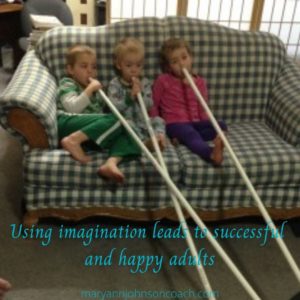




 Technology has been a boon in so many ways. I am amazed at how well versed my nine-year-old grandson is in the use of technology. I watch other kids, and I am equally impressed. But technology, for kids, also has downsides. Here is one that I regularly see with the children that I interact with often; they have a more challenging time filling their time when technology isn’t available.
Technology has been a boon in so many ways. I am amazed at how well versed my nine-year-old grandson is in the use of technology. I watch other kids, and I am equally impressed. But technology, for kids, also has downsides. Here is one that I regularly see with the children that I interact with often; they have a more challenging time filling their time when technology isn’t available.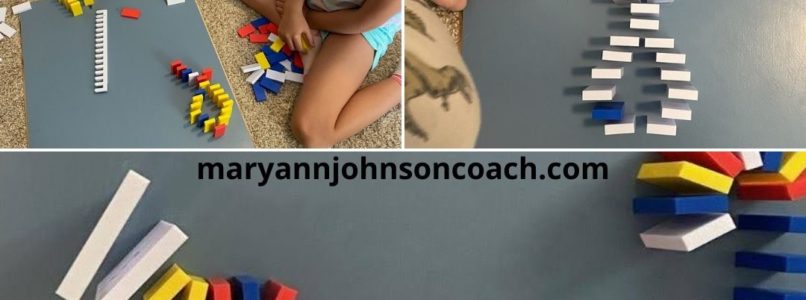
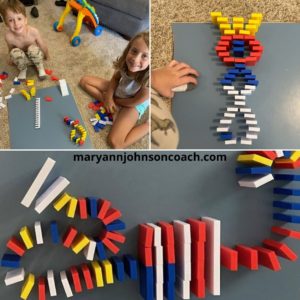 I have talked about children’s ‘SPARKS’ in numerous articles and in my book,
I have talked about children’s ‘SPARKS’ in numerous articles and in my book, 
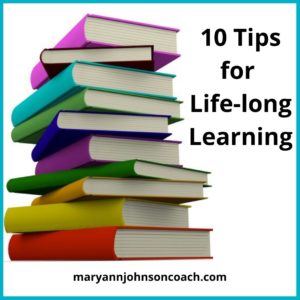 For many families, school has begun in earnest. Whether you are using the public system, a private system, or homeschooling, September usually means we are deep into it. Some years back, I wrote an article about how to help children remain lifelong learners, to become lovers of learning.
For many families, school has begun in earnest. Whether you are using the public system, a private system, or homeschooling, September usually means we are deep into it. Some years back, I wrote an article about how to help children remain lifelong learners, to become lovers of learning.
 How it all started!
How it all started!
 Recently, I was up until 12:30 a.m.
Recently, I was up until 12:30 a.m.